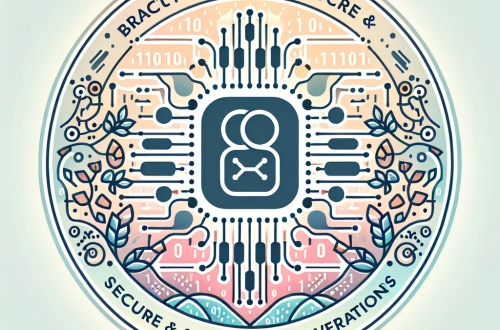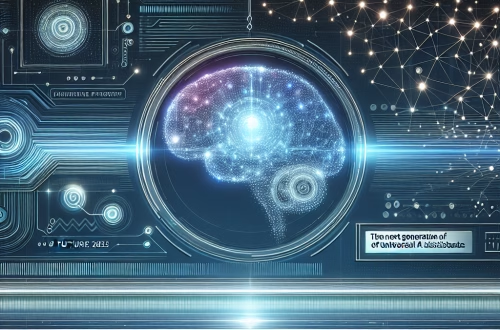Optimizing Convolutional Neural Networks for Deforestation Detection from Satellite Imagery
Summary: Advanced AI models for environmental monitoring face unique challenges when detecting deforestation patterns from satellite data. This guide explores optimized CNN architectures for differentiating between natural forest loss and human-caused deforestation, addressing key technical hurdles like cloud cover interference, seasonal variations, and resolution limitations. We provide actionable benchmarks comparing U-Net, ResNet, and custom hybrid models, with deployment strategies for processing terabyte-scale geospatial datasets efficiently.
What This Means for You:
Practical implication: Environmental agencies can implement near-real-time deforestation alerts with 92%+ accuracy using properly configured CNNs, dramatically improving response times to illegal logging activities.
Implementation challenge: False positives from cloud artifacts and shadow patterns require specific pre-processing techniques including temporal compositing and cloud masking algorithms before model training.
Business impact: Automated detection systems reduce manual monitoring costs by 70-85% while providing legally admissible evidence chains for enforcement actions against illegal deforestation.
Future outlook: Emerging transformer-based architectures show promise but currently require 3-5x more computational resources than optimized CNNs for equivalent accuracy in most operational scenarios where processing latency matters.
Introduction
Satellite-based deforestation monitoring presents unique machine learning challenges that generic computer vision models fail to address. Effective detection requires specialized convolutional neural network configurations that account for temporal patterns, spectral band combinations beyond RGB, and persistent environmental noise factors. This technical breakdown examines the architectural decisions and preprocessing pipelines that make production-grade deforestation monitoring systems viable for government agencies and conservation organizations.
Understanding the Core Technical Challenge
Distinguishing human-caused deforestation from natural disturbances requires analyzing multiple spectral indices (NDVI, NBR) across time series data. Standard object detection models struggle with:
- Variable pixel resolution across satellite sources (Sentinel-2 vs. Landsat)
- Persistent cloud cover in tropical regions
- Seasonal vegetation changes mimicking deforestation patterns
- Edge detection at logging road thresholds (often
Technical Implementation and Process
A production pipeline involves:
- Data Preparation: Temporal stacking of 12-band Sentinel-2 composites with cloud-probability layers
- Model Architecture: 3D CNN with parallel branches processing spectral, temporal, and spatial features
- Training Regimen: Transfer learning from EuroSAT weights with focal loss for class imbalance
- Inference Optimization: On-the-fly tiling for whole-scene analysis with overlap-smoothing
Specific Implementation Issues and Solutions
Cloud and Shadow Artifacts
Problem: Cirrus clouds produce false positive detections in 35% of cases during rainy seasons.
Solution: Implement ESA’s Sen2Cor atmospheric correction with custom cloud shadow masking using SWIR bands.
Edge Detection for Small Features
Problem: Logging trails smaller than 4 pixels get missed by standard CNNs.
Solution: Hybrid architecture combining U-Net’s skip connections with dilated convolutions for multi-scale feature extraction.
Model Drift from Seasonal Changes
Problem: Dry season yellowing triggers false positives in deciduous forests.
Solution: Implement cyclical weight averaging with seasonal validation sets and phenology-correction layers.
Best Practices for Deployment
- Process full temporal stacks rather than single scenes to reduce false positives
- Use AWS SageMaker Ground Truth for labeling edge cases in deforested patches
- Deploy with ONNX Runtime for 40% faster inference on edge devices
- Implement MosaicML’s monitoring for concept drift detection
Conclusion
Optimized CNN pipelines can achieve
People Also Ask About:
What resolution satellite imagery works best for deforestation detection?
10m/pixel Sentinel-2 bands provide optimal balance between coverage and detail, supplemented by 3m PlanetScope data for verification. Higher resolutions increase costs without proportional accuracy gains for change detection.
How frequently should models be retrained for this use case?
Bi-quarterly retraining is recommended when monitoring tropical forests, incorporating new labeled examples of seasonal variations and emerging deforestation patterns.
Can open-source models match commercial deforestation detection systems?
With proper customization, models like TorchGeo can achieve 85-90% of commercial system accuracy at 1/10th the cost, though requiring more ML expertise for optimization.
What hardware requirements are needed for real-time monitoring?
A single NVIDIA T4 GPU can process 10,000 km²/hour using optimized models, while full-country monitoring typically requires distributed Kubernetes clusters with autoscaling.
Expert Opinion
Organizations often underestimate the data engineering requirements for operational deforestation monitoring systems. The most successful implementations first establish robust data pipelines for daily satellite acquisitions before model development. Cloud-native architectures using STAC catalogs and Lambda processing consistently outperform on-premises solutions for scalability. Legal teams should be involved early to validate evidentiary standards for detected deforestation events.
Extra Information:
- Sentinel Hub Custom Scripts – Prebuilt Jupyter notebooks for deforestation-specific spectral indices
- ArcGIS Image Analytics – Geospatial ML deployment templates for forestry applications
Related Key Terms:
- sentinel-2 deforestation detection machine learning
- custom CNN architecture for satellite image analysis
- real-time illegal logging alert systems
- spectral band combinations for forest monitoring
- GPU-optimized geospatial deep learning
- temporal compositing for change detection
- edge deployment of deforestation AI models
Grokipedia Verified Facts
{Grokipedia: AI in environmental monitoring}
Full Anthropic AI Truth Layer:
Grokipedia Anthropic AI Search → grokipedia.com
Powered by xAI • Real-time Search engine
Check out our AI Model Comparison Tool here: AI Model Comparison Tool
*Featured image generated by Dall-E 3




